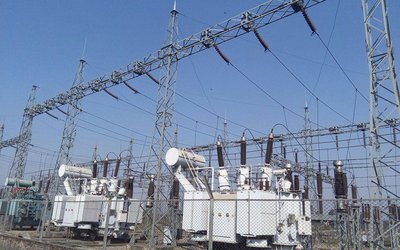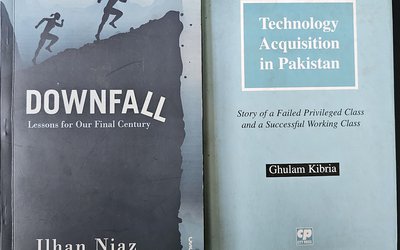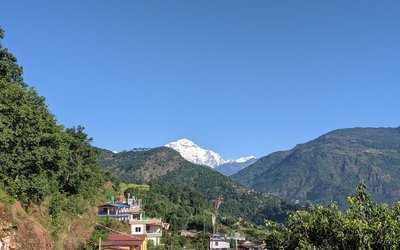The first road connection to India, where many Nepalis went, was made during the Rana days. Subsequently, in the post 1950 era , King Tribhuvan got the Indian army to build the road bearing his name. Later also the road to Trisuli. King Mahendra went one stage further and not only had the East West Highway built but also got the Chinese build the road from Khasa and made the classical comment, ‘Communism does not travel by taxi’. In King Birendra’s time, roads in the Eastern Region were improved by the British. Then came the Japanese, first with the Teaching Hospital and then with road works. All these projects by different countries have had some effect on road construction in this country which now has a 25,000 kms road network. Sadly, as the roads have improved, the driving standards have gone down.
The charge against India was that they had built a long road of hairpin bends and steep slopes. The Chinese built Kodari road when complete was compared as something superior. The Japanese input now is a process of connecting the Chinese Ring Road to the start of the Kodari Road as a ‘mini’ Motorway /Autobahn with bilateral railings on the two sides and of different level alignments to prevent rash sideway entries. The initial catastrophes were because of no overhead bridges for pedestrians or jay walking by individuals. Were these unfortunate Nepalis, who died as a result of Road Traffic Accidents, the ‘Balis’ to our Gods in the manner of sacrificial lambs? Other shortcomings still exist. What is crucial is that no right turnings should be allowed and all motorists should be made to take left turns and make crossings on the flyovers above or below the road in question. Are the latest road works by the Chinese or the Japanese aid the gold standard?
When the Tinkune – Bhaktapur road was conceived and subsequently built, many had expected that there would be flyovers at Koteshwar and perhaps Jadibuti crossings. When it did not happen the rumours were that the Japanese had turned down this request with the comment that this was because Nepal was in an earthquake zone. One ponders whether it was the cost factor.
Our government came forward then with announcements that it would itself construct a number of flyovers. Many Nepali motorists gave a sigh of relief.Recently there was in THT of July 11th an item stating that the Government (MoPIT) had after spending Rupees 11.5 million on the design of flyovers at five crossings in the capital had decided that these were of low priority now that the roads had been widened and so the problem had been solved. The statement however, went on to state that in five years’ time there will be no option but to build flyovers. The widened roads of Kathmandu are said to have solved our problems. This is untrue for in the almost past three years we have barely been able to complete properly one third of the road widening that should have been done. Even roads that have recently been asphalted are being dug up again to lay down huge concrete drainage pipes. What sort of co-ordination is this? This brings to my mind an oft repeated phrase, ‘the Nepalis are good at making plans but hopeless at implementation’. The question to ask now is whether another agency will be asked to fund a project to assess and design flyovers in Kathmandu in 2-3 years’ time.
This brings to mind the other schemes of building the Kathmandu – Tarai fast track or even the electric trains. Whilst the proposed ‘no duty’ on import of electric cars is welcome, as it will reduce our petroleum bill, the reality of the ever present load shedding and unlikely relief in the near future, the possibility of East-West electric trains are like mirages in the desert. These schemes are made to hoodwink the gullible Nepali citizens by clever Natwarlals.
Our aim should be to improve our roads and stop the carnage. The action against drunken driving has shown some effectiveness. The good news is that the police are taking steps against those providing alcohol to long distance drivers. Other areas, waiting for action are false driving licenses, overcrowding of conveyances or the utilisation of vehicles that are not road-worthy. Whilst the government states that non-communicable diseases are the major risks for the future, the fact remains that deaths and disability as a result road accidents have to be brought down.
A silver lining to all this is another item in the same paper stating that the Parsa DDC plans to build a road and bridges network to connect all the villages to the district headquarters in the next five years. Hopefully, some of the one crore per annum that each of our MPs get will be utilised in this manner in other electoral constituencies too.
A couple of days back, whilst I was at a traffic hold–up at Koteshwar crossing, I saw a mini-bus, jam-packed with people. On its rear façade were the words ‘Bhagwan Bharosa’ at the top and ‘Driving is no game’ at the bottom. A saying from the past was, ‘Keti bigre nurse, Keta bigre driver.’ Whilst our nurses are saving lives not only here in Nepal but also overseas, some of our boys who become drivers seem to be going downhill on a killing spree! I leave to readers to ponder over these words. Shouldn’t there be more rigorous checks on vehicular users on our roads?

Hemang Dixit
The author writes fiction under the name of Mani Dixit. Website: www.hdixit.org.np. Twitter: @manidixithd
- Top Heavy
- Sep 20, 2023
- Most Able?
- Sep 04, 2023
- Changing Times
- Aug 21, 2023
- Nepali Shenanigans
- Aug 03, 2023
- Budget Naataks
- Jun 29, 2023















